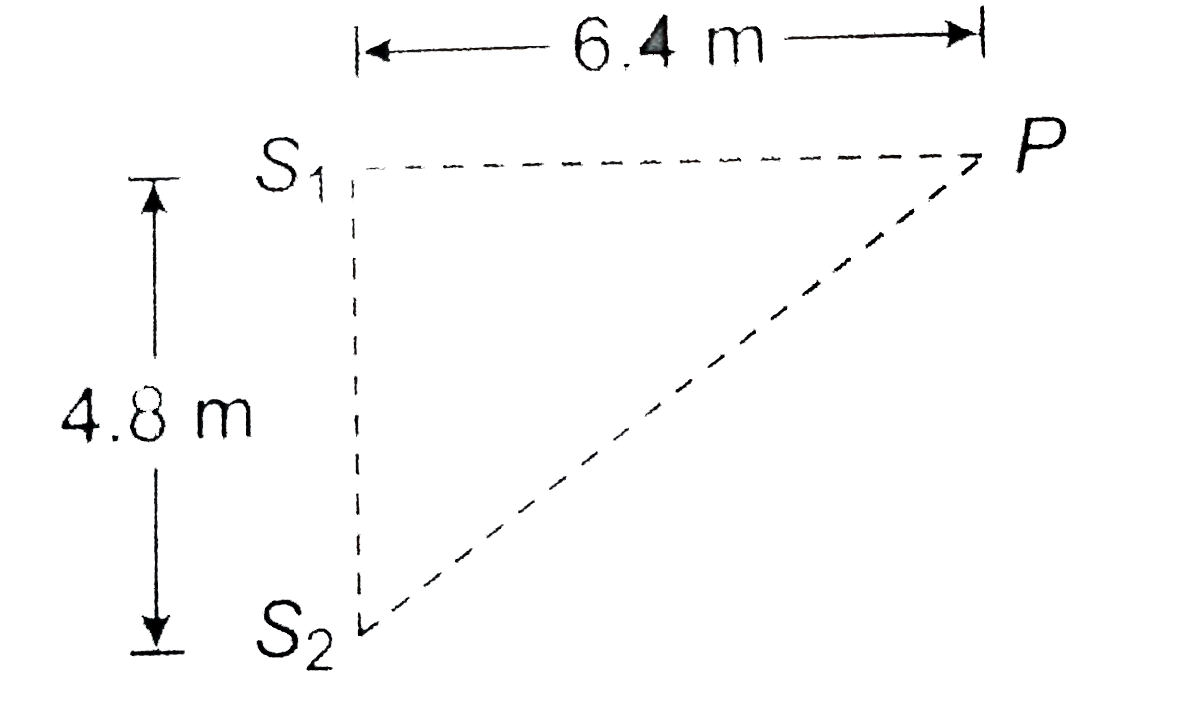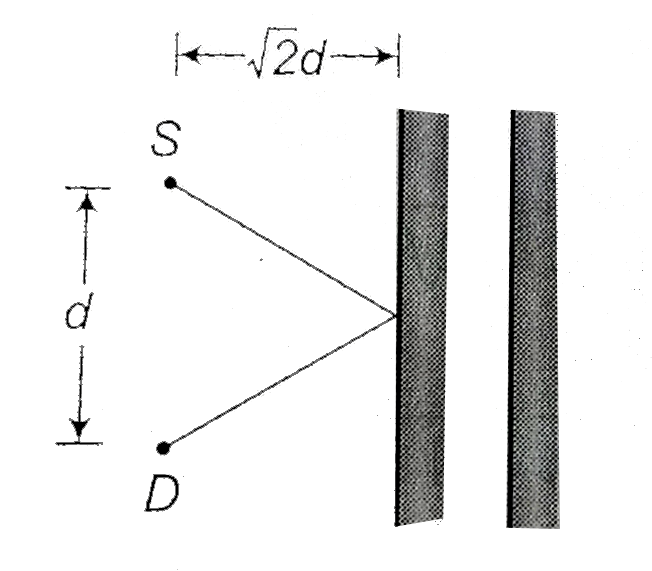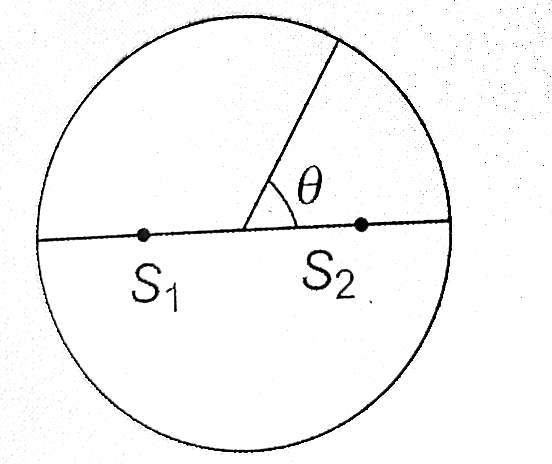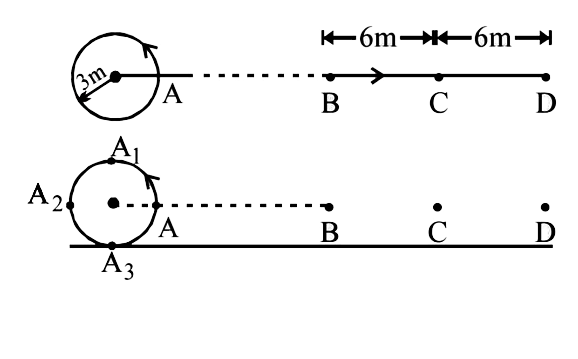Complete Solutions to Example of chapter SOUND WAVES of Class 11 book with complete answers and questions
| Class 11 | PHYSICS |
| Chapter | SOUND WAVES |
| CP SINGH | Example |
| Number Of Questions | 46 |
| Academic Year | 2023-24 |
The speed of sound in dry air at `NTP` is `332m//s`. Assuming air as composed of `4` parts of nitrogen and one parts of oxygen in volume. Calculate the velocity of sound in oxygen under similar conditions. Given density of oxygen and nitrogen at `NTP` are in the ratio `16 : 14` respectively.
03:40View SolutionThe equation of a sound wave in air is given by
`rho = (0.01 N//m^(2)) [sin (1000 s^(-1)) t - (3.0 m^(-1))x]`
(a) Find the frequency, wavelength and the speed of sound wave in air.
(b) If the equilibrium pressure of air is `1.0 xx 10^(5) N//m^(2)`, what are the maximum and minimum pressure at a point as the wave passes through that point ?04:01View SolutionA source of sound operates at 2.0 kHz, 20 W emitting sound uniformly in all direction. The speed of sound in air is `340 m s^(-1)` at a distance of air is `1.2kgm ^(-3)` (a) What is the intensity at a distance of 6.0 m from the source ? (b) What will be the pressure amplitude at this point ? (c ) What will be the displacement amplitude at this point ?
07:30View Solution(a) Sound with intensity larger than `120 dB` appears painful to a person. A small speaker delivers `2.0 W` of audio output. How close can the person get to the speaker without hurting his ears?
(b) If the sound level in a room is increased from `50 dB` to `60 dB`, by what factor level is the pressure amplitude increased?03:16View SolutionA sound wave of frequency 100 Hz is travelling in air. The speed of sound in air is `350 ms^-1` (a) By how much is the phase changed at a given point in 2.5 ms ? (b) What is the phase difference at a given instant between two points separated by a distance of 10.0 cm along the direction of propagation ?
04:15View SolutionFigure shows a tube structure in which a sund signal is sent from one end and is received at the other end.The semicircular part has a radius of 20.0 cm. The frequency ohet sound source can be varied elertronically between 1000 and 4000 Hz. Find the frequencies at which maxima of intensity are detected. The speed of sound in air =`3400ms^-1`.
 04:01View Solution
04:01View SolutionIn a large room , a person receives waves from the same source which reach , being reflected from the `25 m` high ceiling at a point halfway between them . The two waves interfere constructively for a wavelength of
03:07View SolutionTwo sources are placed from a person `P` as shown in figure. The speed of sound in air is `320 m//s`.
(a)
If sound signal is continuously varied from `500 Hz` to `2500 Hz`, for which frequency listener will hear minimum sound intensity.
(b)
Find the frequencies in audible range `(20-20000 Hz)` for which listener will hear maximum sound intensity.04:16View Solution(a) A source of sound `S` and a detector `D` are placed at some distance from one another. A big cardboard is placed near the detector and perpendicular to the line `SD` as shown in figure. It is gradually moved away and it is found that the intensity changes from a maximum to a minimum as the board is moved through a distance of `20 cm.` Find the frequency of the sound emitted. Velocity of sound in are is `336 m//s.`

(b) A source emitting sound of frequency `180 Hz` is placed in front of a wall at a distance of `2 m` from it. A detector is also placed in front of the wall at the same distance from it. find the minimum distance between the source and the detector for which the detector detects a maximum of sound . Speed of sound in air `= 360 m//s.`05:01View SolutionA source `S` and a detector `D` are placed at a distance `d` apart. A big cardboard is placed at a distance `sqrt(2) d` from the source and the detector as shown in figure. The source emits a wave of wavelength `= d//2` which is received by the detector after reflection from the cardboard. It is found to be in phase with the direct wave received from the source. By what minimum distance should the cardboard be shifted away so that the reflected wave becomes out of phase with the direct wave?
 05:32View Solution
05:32View SolutionFigure shows two coherent sources `S_(1)` and `S_(2)` which emit sound of wavelength `lambda` in phase. The separation between the sources is `3lambda.` A circular wire of large radius is placed in such a way that `S_(1)S_(2)` lies in its plane and the middle point of `S_(1)S_(2)` is at the centre of the wire. Find the angular positions `theta,` on the wire for which constructive interference takes place.
 03:55View Solution
03:55View SolutionThree sources of sound `S_(1),S_(2)` and `S_(3)` of equal intensity are placed in a straight line with `S_(1)S_(2) = S_(2)S_(3)` shown in the figure. At a point `P,` far away from the sources, the wave coming from `S_(2)` is `120^(@)` ahead in phase of that from `S_(1),` Also, the wave coming from `S_(3)` is `120^(@)` ahead of that from `S_(2).` What would be the resultant intensity of sound at `P` ?
 02:47View Solution
02:47View SolutionTwo radio stations broadcast their programmes at the same amplitude `A` and at slightly different frequencies `omega_(1)` and `omega_(2)` respectively, where `omega_(1) - omega_(2) = 10^(3) Hz`. A detector receives the signals from the two stations simultaneously, it can only detect signals of intensity `ge 2A^(2)`.
(i) Find the time interval between successive maxima of the intensity of the signal received by the detector.
(ii) Find the time for which the detector remains idle in each cycle of the intensity of the signal.10:47View Solution(a) A tuning fork produces `4` beats per second with another tuning fork of frequency `256 Hz`. The first one is now loaded with a little wax and the beat frequency is found to increase to `6` per second. What was the original frequency of the tuning fork ?
(b) A plano wire `A` vibrates at a fundamental frequncy of `600 Hz`. A second identical wire `B` produces `6` betas per second with it, when of the tension in `A` is slightly increased. Find the ratio of the tension in `A` to the tension to `B`.
( c) A tunnig fork if frequency `256 Hz` produces `4` beats per second with a wire of length `25 cm` vibrating in its fundamental mode. The beat frequency decreases when the length is slightly shortened. What could be the minimum length by whech the wire be shortened so that it produces no beats with the tuning fork?05:22View SolutionA man standing in front of a mountain beats a drum at regular intervals. The drumming rate is gradually increased and he finds that echo is not heard distinctly when the rate becomes `40` per minute. He then moves near to the mountain by `90` metres and finds that echo is again not heard distinctly when the drumming rate becomes `60` per minute. Calculate (a) the distance between the mountain and the initial position of the man and (b) the velocity of sound.
08:46View SolutionA engine is approaching a hill at constant speed. When it is at a distance of `0.9 km`, it blows a whistle, whose echo is heard by the driver after `5 s`. If the speed of sound is `340 m//s`, calculate the speed of the engine.
04:07View Solution(a) A cylindrical metal tube has a length of `50 cm` and is open at both ends. Find the frequencies between `1000 Hz` and `2000 Hz` at which the air is `340 m//s`.
(b) Find the greatest length of an organ pipe open at both ends that will have its fundamental frequency in the normal hearing range `(20 - 20000 Hz)`. Speed of sound in air `= 340 m//s`.
(c) Two successive resonance frequencies in an open organ pipe are `1944 Hz` and `2592 Hz`. Find the length of the tube. The speed of sound in air is `324 m//s`.03:05View SolutionThe air column in a pipe closed at one end is made to vibrate in its second overtone by a tuning fork of frequency `440 Hz`. The speed of sound in air is `330ms^(-1)`. End corrections may be neglected. Let `P_(0)` denote the mean pressure at any point in the pipe, and `DeltaP` the maximum amplitude of pressure variation.
(a) What the length `L` of the air column.
(b) What is the amplitude of pressure variation at the middle of the column?
( c ) What are the maximum and minimum pressures at the open end of the pipe?
(d) What are the maximum and minimum pressures at the closed end of the pipe?08:09View SolutionThe first overtone of an open orgen pipe beats with the first ouertone of a closed orgen pipe with a beat frequency of `2.2 H_(Z)` . The fundamental frequency of the closed organ pipe is `110 H_(Z)` . Find the lengths of the pipes . Speed of sound in air `u = 330 m//s` .
05:32View SolutionTwo narrow cylindrical pipes `A and B` have the same length. Pipe `A` is open at both ends and is filled with a monoatomic gas of molar mass `M_(A)`. Pipe `B` is open at one end and closed at the other end, and is filled with a diatomic gas of molar mass `M_(B)`. Both gases are at the same temperature.
(a) If the frequency of the second harmonic of the fundamental mode in pipe `A` is equal to the frequency of the third harmonic of the fundamental mode in pipe `B`, determine the value of `M_(B)//M_(B)`.
(b) Now the open end of pipe `B` is also closed (so that the pipe is closed at both ends). Find the ratio of the fundamental frequency in pipe `A` to that in pipe `B`.07:37View Solution`AB` is a cylinder of length `1m` fitted with a thin flexible diaphragm `C` at the middle and other thin flexible diaphragms `A` and `B` at the ends. The portions `AC` and `BC` contain hydrogen and oxygen gases respectively. The diaphragms `A` and `B` are set into vibrations of same frequency. What is the minimum frequency of these vibrations for which diaphragms `C` is a node? (Under the conditions of experiment `v_(H_(2) = 1100m//s`, `v_(0_(2)` = `300m//s`).
 07:43View Solution
07:43View SolutionA string `1 m` long and having linear mass density `10 g//m` is sounded with a closed pipe of length `75 cm`. When string is vibrating in its first overtone and the air in the pipe in its fundamental frequency, `5 beats//s` are heard. It is observed that decreasing the tension in the string decreases the beat frequency. If the speed of sound in air is `315 m//s`, Find the tension in the string.
02:33View SolutionConsider the situation shown in figure. The wire which has a mass of 4.00 g oscillates in its second harmonic and sets the air column in the tube into vibrations in its fundamental mode. Assuming that the speed of sound in air is `40 m s^-1`, find the tension in the wire.
 .03:54View Solution
.03:54View SolutionA column of air at `51^(@) C` and a tuning fork produce `4` beats per second when sounded together. As the temperature of the air column is decreased, the number of beats per second tends to decrease and when the temperature is `16^(@) C` the two produce `1` beat per second. Find the frequency of the tuning fork.
03:43View Solution(a) In a resonance column experiment, a tuning fork of frequency `400 Hz` is used. The first resonant is observed when the air column has a length of `20.0 cm` and the second resonance is observed when the air column has a length of `62.0 cm`. (i) Find the speed of sound in air. (ii) How much distance above the open end does the pressure mode form?
(b) A piston is fitted in a cylindrical tube of small crosssection with the other end of the tube open. The tube resonates with a tuning fork of frequency `512 Hz`. The piston is gradually pulled out of the tube and it is found that a second resonance occurs when the piston is pulled out through a distance of `32.0 cm`. Calculate the speed of sound in the air of the tube.03:00View SolutionIn a resonance tube experiment to determine the speed of sound in air, a pipe of diameter `5 cm` is used . The column in pipe resonates with a tuning fork of frequency `480 H_(Z)` when the minimum length of the air column is `16 cm` . Find the speed in air column at room temperature.
02:11View SolutionA metal wire of diameter `1 mm` is held on two knife edges by a distance `50 cm`. The tension in the wire is `100 N`. The wire vibrating with its fundamental frequency and a vibrating tuning fork together produce `5 beats//s`. The tension in the wire is then reduced to `81 N`. When the two are excited, beats are heard at the same rate. Calculate
(a) frequency of a fork and
(b) the density of material of wire.03:36View SolutionWhen `1 m` long metallic wire is stressed, an extension of `0.02 m` is produced. An organ pipe `0.5 m` long and open at both ends, when sounded with this stressed metallic wire, produced `8` beats in its fundamental mode. By decreasing the stress in the wire, the number of beats are found to decrease. Find the Young's modulus of the wire. The density of metallic wire is `10^(4) kg//m^(3)` and velocity of sound in air is `292 m//s`.
03:43View SolutionA car moving at `108 km h^-1` finds another car in front of it going in the same direction at `72 km h^-1`. The first car sounds a horn that has a dominant frequency of 800 Hz. What will be the apparent frequency heard by the driver in the front car ? Speed of sound in air ` = 330 ms^-1`
04:46View SolutionAn observer standing on a railway crossing receives frequencies 2.2 kHz and 1.8 kHz when the tran approaches and recedes from the observer. Find the velocity of the train (speed of sound in air is 300 m/s).
02:30View SolutionA bullet passes past a person at a speed of `220 m s^-1`. Find the fractional change in the frequency of the whistling sound heard by the person as the bullet crosses the person. Speed of sound in air `= 330 m s^-1`.
04:02View SolutionA person going away from a factory on his scooter at a speedof `36 kmh^-1` listens to the siren of the factory. If the main frequency of the siren is 600 hz and a wind is blowing alongthe direction of the scooter at `36 kmh^-1`, find the main frequency as heard by the person.
03:28View SolutionTwo tuning forks with natural frequencies of `340 Hz` each move relative to a stationary observer. One fork moves away form the observer, while the other moves towards him at the same speed. The observer hears beats of frequency `3 Hz`. Find the speed of the tuning fork.
05:13View SolutionTwo electric trains run at the same speed of `72 km h^-1` along the same track and in the same direction with a separation of 2.4 kin between them. The two trains simultaneously sound brief whistles. A person is situated at a perpendicular distance of 500 m from the track and is equidistant from the two trains at the instant of the whistling. If both the whistles were at 500 Hz and the speed of sound in air is `340 m s^-1`, find the frequencies heard by the person.
07:43View SolutionA small source of sound vibrating at frequency `500 Hz` is rotated in a circle of radius `100//pi cm` at a constant angular speed of `5.0` revolutions per second. A listener situates himself in the plane of the circle. Find the minimum and the maximum frequency of the sound observed. Speed of sound in air `= 332 m//s`.
02:46View SolutionA source of sound is moving along a circular orbit of radius `3 meter` with an angular velocity of `10 rad//s`. A sound detector located far away from the source is executing linear simple harmonic motion along the line `BD` with an amplitude `BC = CD = 6 meters`. The frequency of oscillation of the detector is `(5)/(pi)` per second. The source is at the point `A` when the detector is at the point `B`. If the source emits a continuous sound wave of frequency `340 Hz`, Find the maximum and the minimum frequencies recorded by the detector.
 07:16View Solution
07:16View SolutionA small source of sound S of frequency 500 Hz is attached to the end of a light string and is whirled in a vertical circle of radius 1.6 in. The string just remains tight when the source is at the highest point. (a) An observer is located in the same vertical plane at a large distance and at the same height as the centre of the circle. The speed of sound in air `= 330 m s^-1 and `g = 10ms^-2`. Find the maximum frequency heard by the observer. (b) An observer is situated at a large distance vertically above the centre of the circle. Find the frequencies heard by the observer corresponding to the sound emitted by the source When it is at the same height as the centre. ltbr.
 10:41View Solution
10:41View SolutionThe driver of as car approaching a vertical wall notices that the frequency of his car's horn charges from 440 Hz to 480 Hz when it gets reflected from the wal. Find the speed of the car if that of the sound is `330 ms^-1`.
07:46View SolutionA band playing music at a frequency `f` is moving towards a wall at a speed `v_(b)`. A motorist is following the band with a speed `v_(m)`. If `v` is the speed of sound, obtain an expression for the beat frequency heard by the motorist.
08:18View SolutionA bat emitting an ultrasonic wave of frequecy `4.5 xx 10^4` Hz flies at a speed of `6ms^(-1)` between two parallel walls. Find the two frequecies heard by the bat and the beat frequecy between the two. The speed of sound is `330ms^(-1)`
11:44View SolutionA car moves with a speed of `54 kmh^-1` towards a cliff. The horn of the car emits sound of frequency 400 Hz at a speed of `335 m s^-1`. (a) Find the wavelength of the sound emitted by the horn in front of the car. (b) Find the wavelength of the wave reflected from the cliff (c) What frequency does a person sitting in the car hear for the reflected sound wave ? (d) How many beats does he hear in 10 seconds between the sound coming directly from the horn and that coming after the reflection ?
10:10View SolutionA train approaching a hill at a speed of `40 km//hr` sounds a whistle of frequency `580 Hz` when it is at a distance of `1km` from a hill. A wind with a speed of `40km//hr` is blowing in the direction of motion of the train Find
(i) the frequency of the whistle as heard by an observer on the hill,
(ii) the distance from the hill at which the echo from the hill is heard by the driver and its frequency.
(Velocity of sound in air `= 1, 200 km//hr`)08:54View SolutionA boat is travelling in a driver in river with a speed `10 m//s` along the stream flowing with a speed `2m//s`. From this, boat, a sounjd transmitter is lowered into the river through a right support. The wavelength of the sound emitted from the transmitter inside the water is `14.45 mm`. Assume that attention of sound in water and air is negligible.
(a) What will be frequency detected by receiver kept inside downstream?
(b) The transmitter and the receiver are now pulled up into air. The air is blowing with a speed `5 m//s` in the direction opposite the river stream. Determine the frequency of the sound detected by the receiver. (Temperature of the air and water `= 20^(@)C`, Density of river water `= 10^(3) kg//m^(3)`. Bulk modulus of the water `= 2.088 xx 10^(6) Pa`, Gas constant `R = 8.31 J//mol-K`, Mean molecular mass of air `= 28.8 xx 10^(-3) kg//mol`, `C_(P)//C_(V)` for air `= 1.4`).05:15View SolutionA source of sound emitting a 1200 Hz note travels along a straight line at a speed of `170 m s^-1`. A detector is placed at a distance of 200 m from the line of motion of the source. (a) Find the frequency of sound received by the detector at the instant when the source gets closest to it. (b) Find the distance between the source and the detector at the instant it detects the frequency 1200 Hz. Velocity of sound in air` = 340 m s^-1`.
09:37View SolutionThe wavelength of light coming from a distant galaxy is found to be `0.5%` more than that coming from a source on earth. Calculate the velocity of galaxy.
01:08View SolutionAn astronaut is approaching the moon. He sends a ratio signal of frequency `5 xx 10^(9) Hz` and find that the frequency shift in echo received is `10^(3) Hz`. Find his speed of approach.
03:35View Solution
Example questions and complete solutions for chapter SOUND WAVES of CP SINGH PHYSICS (HINGLISH) of Class 11
